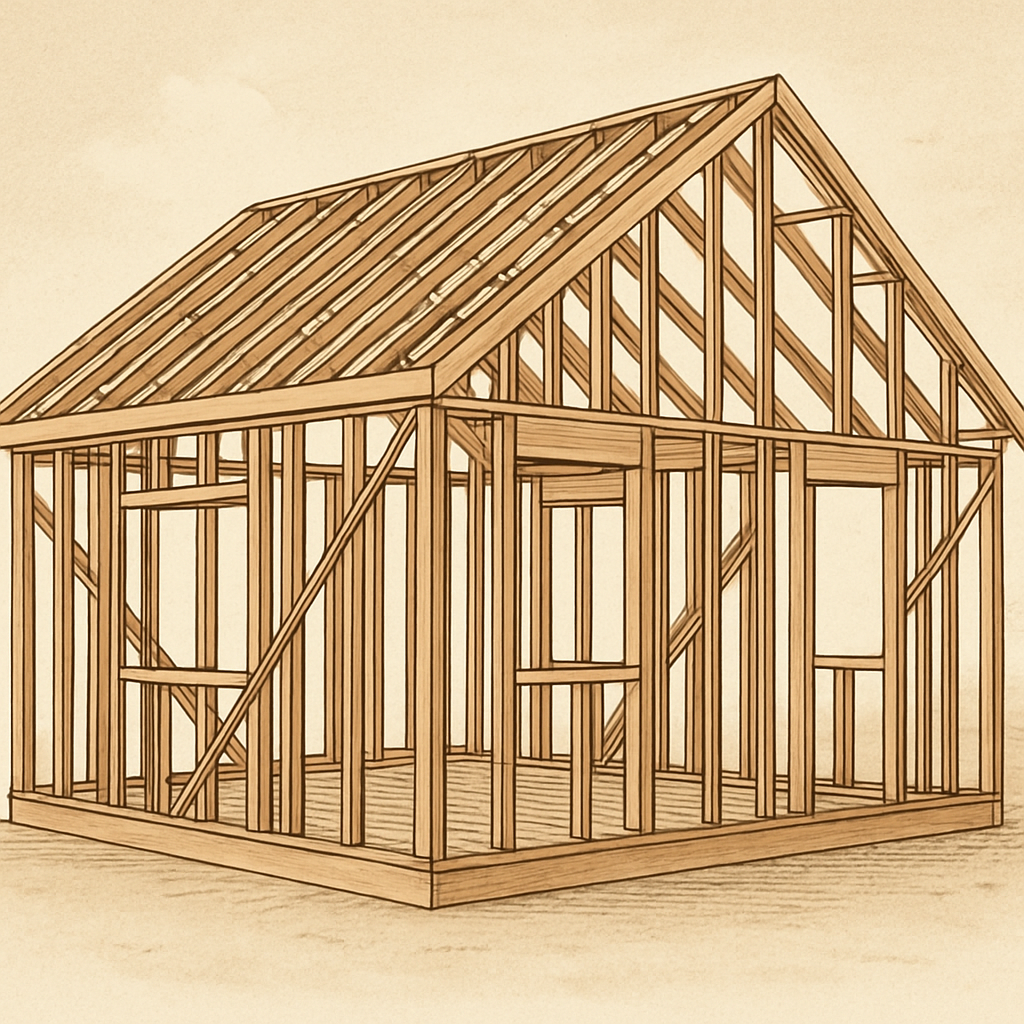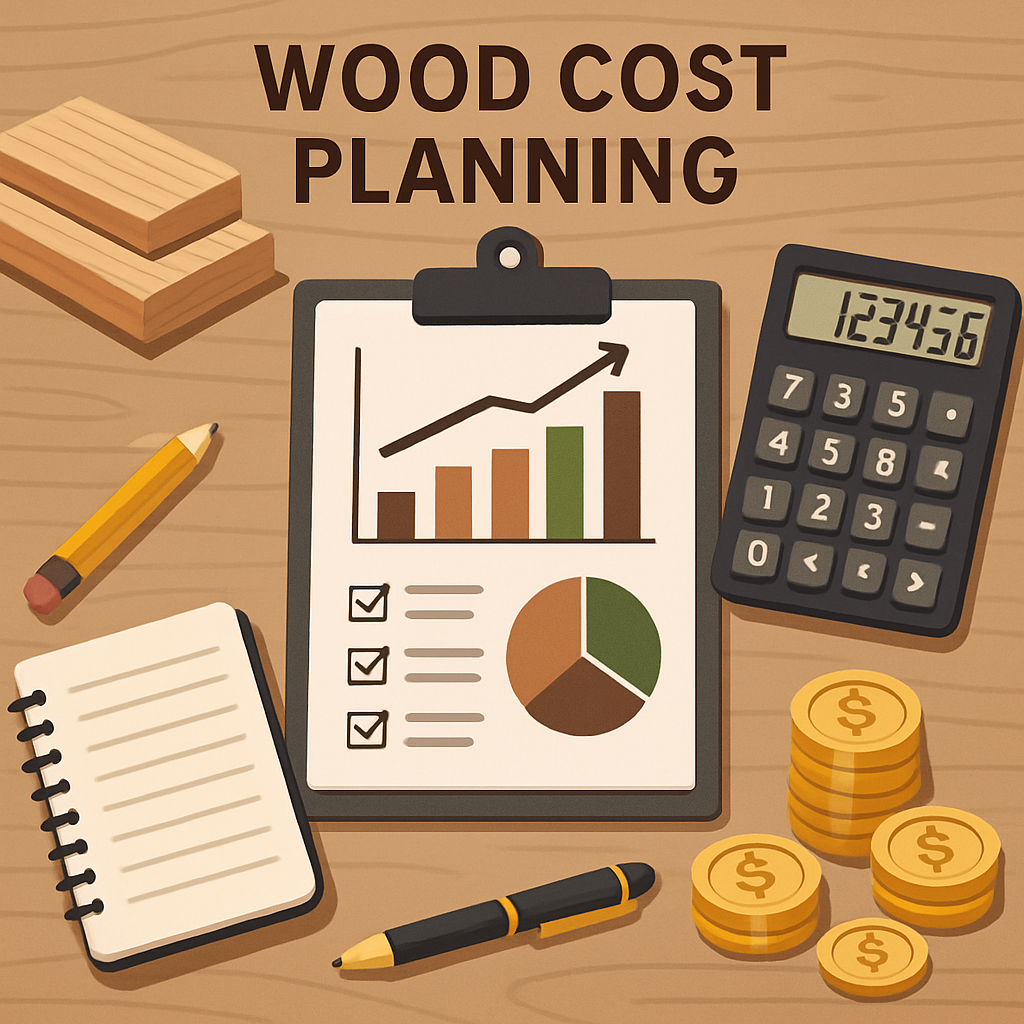Wood framing, also known as timber framing, is the process of building structures using carefully crafted wooden components. This method is popular due to its ease of use, availability, and adaptability to various architectural designs. Let’s delve into the essentials of wood framing.
The Basics of Wood Framing
Wood framing involves the assembly of wooden components to create the skeleton of a building. The process starts with laying the foundation, followed by constructing walls, floors, and roofs. The primary elements of wood framing include studs, joists, rafters, and beams, all of which are crucial for maintaining the structural integrity of a building. Understanding the role each component plays is key to successful construction.
Historical Context of Wood Framing
The use of wood as a building material dates back centuries, with timber framing being one of the earliest forms of construction. Historically, wood was readily available and easy to work with, making it a preferred choice for builders across different cultures. In the United States, wood framing became especially popular during the 19th century, with the advent of balloon framing techniques that revolutionized residential construction.
Modern Innovations in Wood Framing
Advancements in technology have introduced new materials and methods in wood framing, enhancing its durability and efficiency. Engineered wood products such as laminated veneer lumber (LVL) and cross-laminated timber (CLT) offer stronger and more stable alternatives to traditional solid wood. These innovations allow for larger spans and more creative architectural designs, expanding the possibilities of wood-framed structures.
Common Wood Types in Construction
Several wood types are commonly used in framing, each with its unique characteristics:
Douglas Fir
Douglas Fir is renowned for its strength and stability, making it a popular choice for framing. This wood type is known for its excellent durability, which is why it is often preferred in areas with harsh weather conditions. Its fine grain and smooth texture also make it aesthetically pleasing, allowing it to be used in visible structural elements.
Southern Yellow Pine
Southern Yellow Pine is valued for its high load-bearing capacity and resistance to wear. It is a versatile option suitable for various construction needs, from residential homes to commercial buildings. The dense grain structure of Southern Yellow Pine provides it with natural resistance to decay and pests, especially when treated, making it suitable for both interior and exterior applications.
Spruce-Pine-Fir (SPF)
Spruce-Pine-Fir, commonly referred to as SPF, is a combination of spruce, pine, and fir. This wood is lightweight and easy to work with, which makes it a popular choice in residential construction. Its affordability and availability make it an economical option for many builders. SPF is also known for its ability to hold nails and screws securely, which is crucial for maintaining the integrity of framed structures.
Cedar and Redwood
Cedar and Redwood are lesser-used but still valuable wood types in construction. They are prized for their natural resistance to insects and decay, making them ideal for exterior applications like decks and siding. The aromatic properties of cedar also help repel pests, while redwood’s rich color adds aesthetic value to any project.
Engineered Wood Products
Engineered wood products such as plywood, oriented strand board (OSB), and laminated veneer lumber (LVL) are increasingly being used in construction. These products are manufactured by binding together wood strands, veneers, or fibers, resulting in materials that are often stronger and more uniform than natural wood. They offer consistent performance and are available in larger sizes, reducing the number of joints and potential weak points in a structure.
Best Framing Materials for Cold Weather
In colder climates, choosing the right wood is crucial. Douglas Fir and Southern Yellow Pine are often recommended due to their ability to withstand freezing temperatures without warping or losing structural integrity.
Douglas Fir in Cold Climates
Douglas Fir is well-suited for cold climates because of its inherent strength and stability. It maintains its structural integrity even in extreme weather conditions, making it an ideal choice for framing in regions prone to heavy snowfall and freezing temperatures. Its ability to resist shrinkage and warping ensures that the frame remains intact over time.
Southern Yellow Pine’s Resilience
Southern Yellow Pine is another excellent choice for cold climates, particularly when treated to withstand moisture. Its dense grain structure provides natural insulation, helping to maintain a stable indoor environment. When used in combination with modern insulation techniques, Southern Yellow Pine frames contribute to energy-efficient homes that remain comfortable year-round.
Insulation and Wood Framing
Proper insulation is essential in cold climates, and wood framing offers several advantages in this regard. The natural thermal properties of wood help reduce heat transfer, enhancing the overall energy efficiency of a building. When combined with high-quality insulation materials, wood-framed structures can achieve excellent thermal performance, reducing heating costs and improving comfort.
Moisture Management in Cold Weather
Moisture management is critical in cold climates to prevent issues like mold and rot. Kiln-dried lumber is recommended for framing, as it has a lower moisture content and is less susceptible to warping. Additionally, incorporating vapor barriers and proper ventilation into the design can help control moisture levels and protect the wood from damage.
Costs and Budget Planning
Understanding the costs associated with wood framing is essential for effective construction budget planning. Here’s what you need to know about current trends and estimates.
Wood Framing Cost 2025
The cost of wood framing can vary significantly based on location, wood type, and market conditions. As of 2025, lumber price trends indicate a slight increase due to demand and supply chain challenges. On average, expect to pay between $7 to $10 per square foot for basic framing. However, regional variations can affect these estimates, with prices fluctuating based on local availability and economic conditions.
Cost-Effective House Framing Strategies
To reduce framing costs, consider using a mix of treated and untreated lumber based on specific needs. Treated lumber is ideal for areas prone to moisture, while untreated wood can be used in dry, protected areas to save on costs. Evaluating the specific needs of your project and strategically selecting materials can lead to significant cost savings without compromising quality.
Rough Carpentry Cost Estimate
Rough carpentry, which involves the basic framework and structural elements, typically constitutes a significant portion of the framing budget. Depending on the complexity of the design, rough carpentry costs can range from $15,000 to $35,000 for a standard-sized home. Factors such as labor rates, material choice, and project timeline can all influence the final cost, so careful planning is essential.
Factors Influencing Lumber Prices
Several factors can influence lumber prices, including supply chain disruptions, environmental regulations, and market demand. Staying informed about these factors can help builders anticipate price changes and make more informed purchasing decisions. Engaging with reliable suppliers and considering bulk purchasing when prices are favorable can also help manage costs effectively.
Budgeting for Unexpected Expenses
Construction projects often encounter unexpected expenses, and wood framing is no exception. Setting aside a contingency fund of 10-15% of the total budget can provide a buffer for unforeseen costs. This proactive approach ensures that the project remains on track even if unexpected challenges arise, such as material shortages or design changes.
Climate Impact and Wood Durability
Climate plays a significant role in determining the longevity and performance of wood framing. Understanding these factors can help in making informed decisions.
Wood Durability in Humid Climates
In regions with high humidity, selecting termite-resistant wood framing is crucial. Southern Yellow Pine, when treated, offers excellent resistance to moisture and pests, making it a viable option for humid environments. Utilizing pressure-treated wood and applying additional protective coatings can further enhance the durability of the frame.
Wood Warping and Moisture Impact
Warping is a common issue in wood framing, often caused by fluctuating moisture levels. To minimize warping, ensure proper ventilation and use kiln-dried lumber, which is less susceptible to moisture-related issues. Regular maintenance, such as inspecting for signs of moisture damage and addressing leaks promptly, can prevent long-term structural problems.
Sustainable Wood Options for Homes
For eco-conscious builders, sustainable wood options such as reclaimed wood or certified lumber from responsibly managed forests offer a greener alternative. These options not only reduce environmental impact but also contribute to sustainable building practices. Certification programs such as the Forest Stewardship Council (FSC) provide assurance that the wood is sourced from sustainable and ethical forestry operations.
Climate Considerations in Material Selection
The local climate should be a key consideration when selecting wood for framing. Different wood species have varying levels of resistance to environmental factors such as temperature fluctuations, humidity, and pests. Consulting with local building experts can provide valuable insights into the most suitable wood types for specific climate conditions, ensuring optimal performance and longevity.
Innovations in Wood Treatment
Advancements in wood treatment technologies have led to the development of enhanced protective coatings and treatments. These innovations improve the wood’s resistance to moisture, pests, and decay, extending the lifespan of the frame. Exploring these options can provide additional protection and peace of mind, particularly in challenging environmental conditions.
Pros and Cons of Wood Framing
by Clay Banks (https://unsplash.com/@claybanks)
Wood framing comes with its set of advantages and disadvantages. Understanding these can guide your choice in construction materials.
Advantages of Wood Framing
- Flexibility: Wood allows for a wide range of architectural styles and modifications. Its versatility makes it suitable for both traditional and modern designs, providing endless possibilities for customization.
- Cost-Effective: Generally more affordable than steel or concrete. The lower material and labor costs make wood framing an attractive option for budget-conscious builders and homeowners.
- Ease of Construction: Wood is easier to handle and requires less specialized labor. Its lightweight nature simplifies transportation and installation, reducing construction time and effort.
Disadvantages of Wood Framing
- Susceptibility to Pests: Wood can be vulnerable to termites and other pests if not treated properly. Regular inspections and maintenance are essential to prevent infestations and ensure the long-term durability of the frame.
- Fire Risk: Despite the availability of fire-rated wood products, wood is inherently flammable. Implementing fire-resistant treatments and incorporating fire safety measures in the design can mitigate this risk.
- Moisture Sensitivity: Without proper treatment, wood can warp or rot when exposed to moisture. Ensuring adequate moisture barriers and ventilation can help protect the wood from environmental damage.
Environmental Impact of Wood Framing
Wood framing is often considered a more sustainable option compared to other materials like steel or concrete. Wood is a renewable resource, and when sourced responsibly, it has a lower carbon footprint. However, the environmental impact can vary based on the sourcing, manufacturing, and transportation of the wood, so it’s important to consider these factors in the decision-making process.
Longevity and Maintenance Considerations
Proper maintenance is crucial for extending the lifespan of wood-framed structures. Regular inspections, timely repairs, and protective treatments can prevent common issues like rot and decay. By proactively addressing potential problems, homeowners and builders can ensure that the structure remains safe and functional for many years.
Comparing Wood Framing with Alternative Materials
While wood framing offers several advantages, it’s important to compare it with alternative materials like steel and concrete. Each material has its own set of benefits and limitations, and the choice ultimately depends on the specific needs and priorities of the project. Evaluating factors such as cost, durability, environmental impact, and design flexibility can guide the decision-making process.
Practical Tips and Mistakes to Avoid
Home Construction Framing Checklist
To ensure a successful wood framing project, consider this checklist:
- Ensure all wood is properly treated and dried. This prevents moisture-related issues and enhances the longevity of the frame.
- Verify that all measurements and cuts are accurate. Precision is key to maintaining structural integrity and ensuring that all components fit together seamlessly.
- Use appropriate fasteners and connectors. Choosing the right hardware is essential for securing the frame and preventing movement or instability.
- Regularly inspect for signs of moisture or pest damage. Early detection and intervention can prevent minor issues from escalating into major structural problems.
Construction Framing Tips
- Prioritize quality over cost when selecting lumber. Investing in high-quality materials can save money in the long run by reducing maintenance and repair needs.
- Keep the worksite clean and organized to prevent accidents. A tidy workspace minimizes the risk of injuries and ensures that construction progresses smoothly.
- Plan for expansions or modifications to avoid structural issues later. Anticipating future needs during the design phase can prevent costly changes and disruptions down the line.
How to Reduce Framing Costs
- Buy in bulk to take advantage of discounts. Purchasing materials in larger quantities can lead to significant cost savings, particularly for larger projects.
- Consider prefabricated components to reduce labor costs. Prefabrication can streamline the construction process and reduce the time and labor required on-site.
- Opt for a simple design to minimize material usage. Simplifying the design can lower material costs and reduce the complexity of the construction process, making it more efficient and cost-effective.
Common Mistakes in Wood Framing
Avoiding common mistakes can improve the quality and efficiency of wood framing projects. Some frequent errors include inadequate bracing, incorrect fastener selection, and neglecting moisture control measures. Learning from these mistakes and implementing best practices can enhance the overall success of the project.
Enhancing the Longevity of Wood Frames
To maximize the lifespan of wood-framed structures, it’s important to focus on proper maintenance and protection. This includes applying protective coatings, ensuring adequate drainage, and conducting regular inspections. By prioritizing these measures, builders and homeowners can extend the longevity of the frame and preserve its structural integrity.
Conclusion
Wood framing remains a popular choice in U.S. construction due to its versatility and cost-effectiveness. By understanding the various wood types, costs, climate impacts, and pros and cons, you can make informed decisions for your construction projects. Whether you’re a seasoned builder or a first-time homeowner, this guide provides the insights needed to navigate the world of wood framing with confidence. As construction methods evolve, staying informed about the latest trends and innovations in wood framing will ensure that you can continue to benefit from this time-tested building method.







